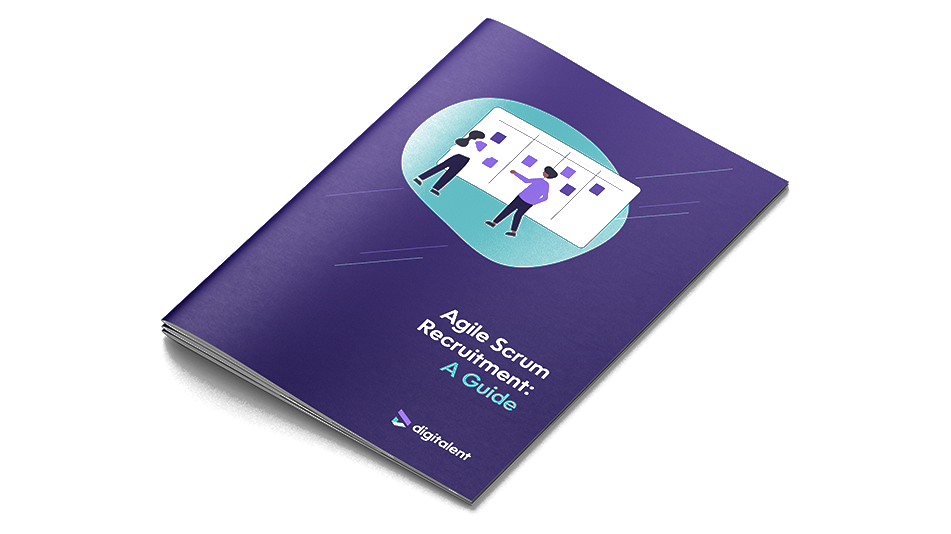
Building a strong creative team is essential for any business that wants to succeed in today's competitive market.
Hiring talented individuals who can bring innovative ideas and a unique perspective to the table can help businesses stay ahead of the curve and stand out from their competitors. However, hiring for creative roles can be a challenging task, as the needs of creative talent are often different from those of other professionals.
In this article, we’ll explore the unique needs of creative talent in the recruitment process and discuss strategies that can help businesses attract and retain top creative talent.
Understanding the Creative Mindset
Creative professionals are unique individuals with a distinctive mindset that sets them apart from other professionals. They thrive on innovation, inspiration, and experimentation. Creatives tend to be highly imaginative, resourceful, and think outside the box. They value the importance of self-expression and the freedom to explore their ideas without limitations.
And that’s how they want to do their jobs, yet 80% of US and UK workers feel pressured to be more productive than creative.
In addition to these traits, creative talent also displays a unique blend of both analytical and artistic thinking. They have the ability to combine logic and creativity to come up with unique solutions to complex problems. Furthermore, they are highly adaptable to change and are always on the lookout for new ways to innovate and create.
Hiring managers must take these characteristics into account when recruiting creative talent. It's important to understand the creative process and the unique challenges that creative professionals face. Providing an environment that encourages experimentation, supports innovation, and values creativity is essential to attracting and retaining top creative talent.
During the recruitment process, it's important to ask questions that address these characteristics. Examples include asking about their favourite projects, how they handle creative blocks, and how they collaborate with others. By understanding the creative mindset, hiring managers can better assess and select the right candidates for their team.
Navigating the Competitive Landscape
The creative industry is known for being highly competitive, with top talent constantly sought after by numerous companies. As an employer, it is important to understand the competitive landscape of the industry and differentiate your company to attract the best candidates.
One way to stand out from the competition is to create a strong employer brand. This can be achieved by showcasing your company culture, values, and achievements. It is important to promote your company in a positive light, as potential candidates are likely to do their own research before applying for a role.
Offering competitive compensation and benefits packages can also help attract top talent. In addition to a competitive salary, consider offering perks such as flexible working arrangements, professional development opportunities, and a comprehensive benefits package.
Creating a positive candidate experience is crucial in a competitive industry. This includes providing regular communication throughout the hiring process, being transparent about the role and company, and ensuring that the candidate feels valued and respected throughout the process. Even if a candidate is not ultimately hired, a positive candidate experience can enhance your employer brand and make your company more attractive to future candidates.
By understanding the competitive landscape of the creative industry and taking steps to differentiate your company, you can attract top talent and build a strong team of skilled creatives.
Building an Inclusive Culture
The creative industry thrives on diversity and different perspectives, and building an inclusive culture is crucial to attracting and retaining top creative talent. A diverse workforce brings a range of experiences, ideas, and viewpoints that can drive innovation and creativity in your company. Additionally, an inclusive culture can improve employee satisfaction and reduce turnover rates.
To build an inclusive culture, it is important to actively recruit a diverse range of candidates and create an environment that supports their needs. This includes addressing any unconscious biases in the hiring process and providing equal opportunities for growth and development.
In addition to recruitment practices, fostering a culture of inclusion requires ongoing efforts to promote diversity and equality within the workplace. This can include training and education for all employees on topics such as unconscious bias, diversity, and inclusion. Providing support and resources for underrepresented groups, such as mentorship programs, can also help to create a more inclusive workplace.
Ultimately, building an inclusive culture requires a commitment from leadership and a willingness to continuously evaluate and improve upon practices and policies. By prioritising diversity and inclusion, your company can attract and retain top creative talent, leading to a more innovative and successful business.
Providing Opportunities for Growth and Development
Providing opportunities for growth and development is essential to attract and retain top creative talent. Creative professionals are typically passionate about their work and are always looking to learn new skills and techniques to enhance their craft.
Creative roles require continuous learning and development to keep up with evolving trends, techniques and technologies. A lack of growth opportunities can result in creative professionals feeling stagnant and unmotivated, which can lead to a decline in productivity and job satisfaction. Providing opportunities for growth and development can help to foster a culture of learning and creativity, and demonstrate to employees that they are valued members of the team.
There are many ways to offer opportunities for professional development in creative roles. This can include training sessions, workshops, conferences, mentorship programs, and job shadowing. It's important to tailor these opportunities to the specific needs and interests of your employees to ensure they are engaged and motivated to learn.
Career advancement is another essential component of growth and development in creative roles. Providing a clear path for career advancement shows employees that there is room for growth within the company and that their hard work and dedication will be rewarded. This can include opportunities for promotions, leadership roles, or cross-functional training.
Offering Competitive Compensation and Benefits
The creative industry is highly competitive, and top talent is in high demand. To attract and retain the best professionals, it's important to offer competitive compensation and benefits packages. This includes understanding the current market rates for various creative roles, such as graphic designers, product designers, copywriters, and art directors.
Providing competitive compensation and benefits not only attracts top talent, but also shows that your company values its employees. This can lead to higher employee satisfaction and engagement, which in turn can improve productivity and quality of work.
In addition to competitive salaries, offering flexible work arrangements can also be a key factor in attracting and retaining top creative talent. This can include options for remote work, flexible schedules, and unlimited annual leave. Many creative professionals value work-life balance and autonomy in their work, and offering flexible work arrangements can demonstrate that your company respects and supports these values.
It's important to regularly review and update these packages to ensure they remain competitive and meet the needs and expectations of your employees.
Expert Recruitment Support from People Who Understand Creatives
Hiring a skilled creative team is crucial for any company looking to make an impact in today's competitive market. Understanding the unique needs of creative talent is the first step towards achieving this goal.
By exploring the creative mindset, navigating the competitive landscape, building an inclusive culture, providing opportunities for growth and development, and offering competitive compensation and benefits, companies can attract and retain top creative talent.
To gain a deeper understanding of what makes creatives tick, we recommend tuning in to our podcast series, Humans of Creative.
Contact us today for more information on how our expert recruitment support can help you build a team of talented creatives.
